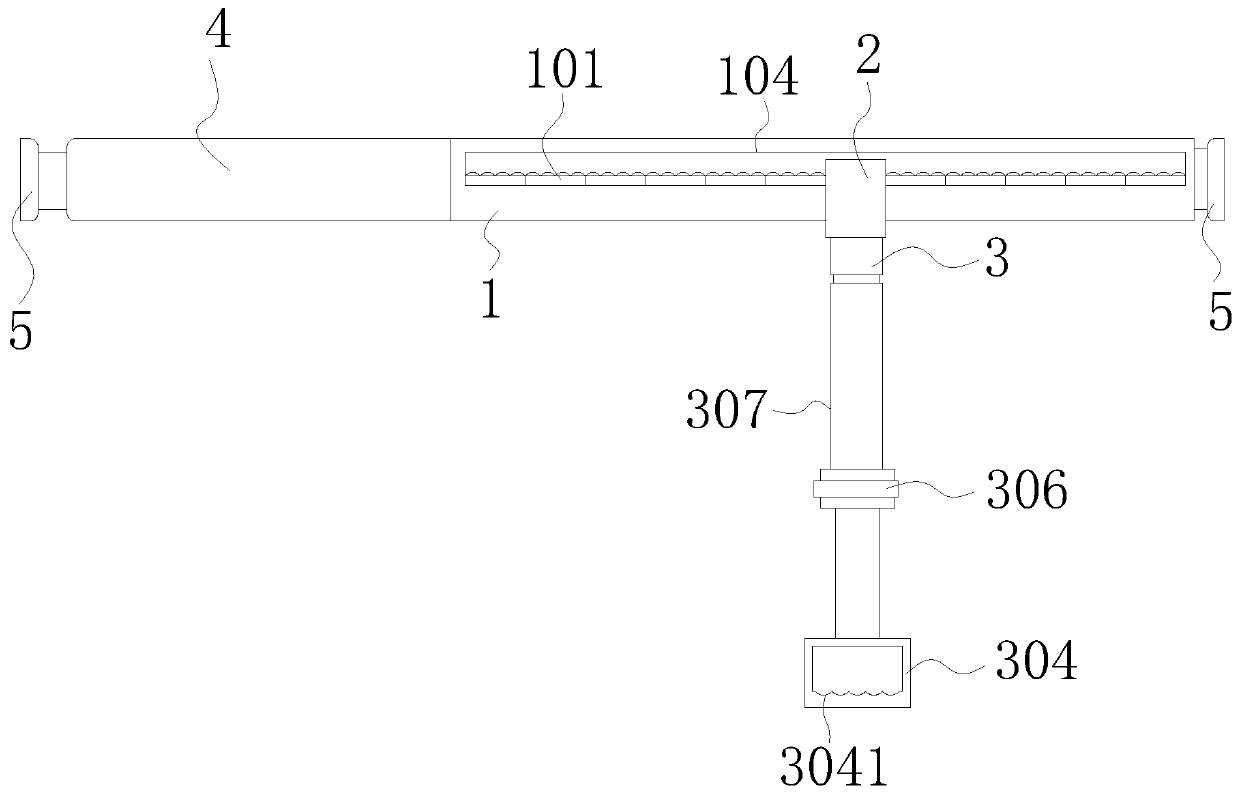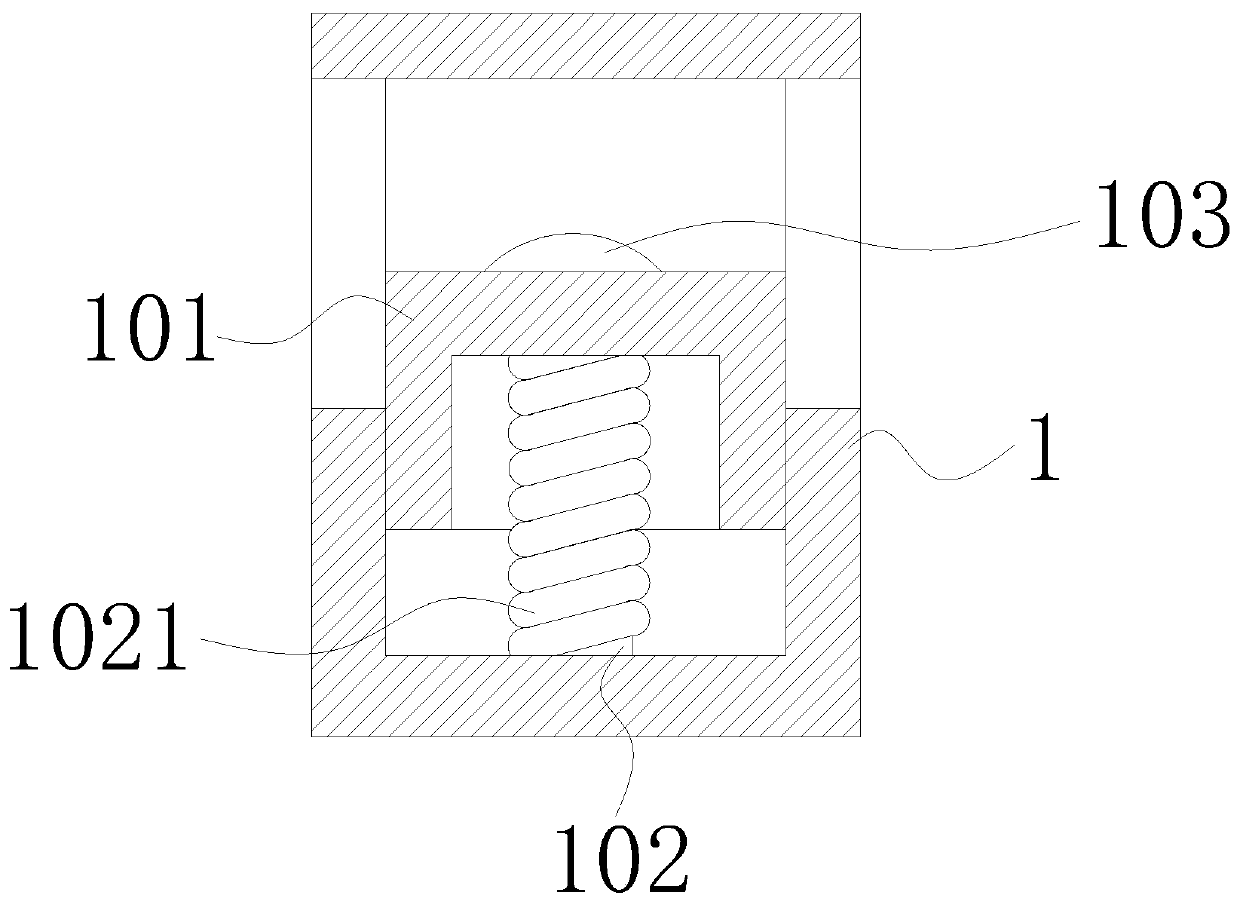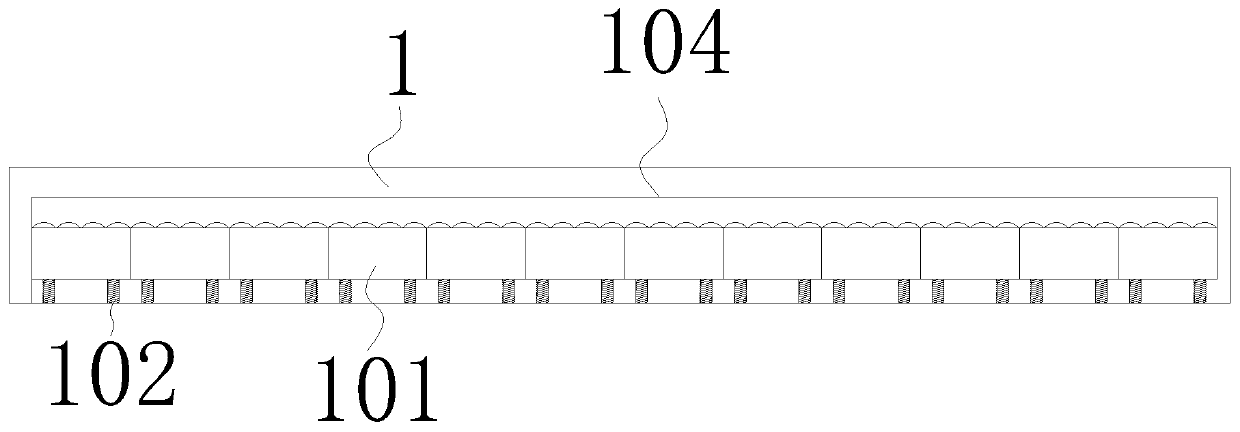Medical anti-falling handrail
An anti-fall and armrest technology, applied in the medical field, can solve problems such as unfavorable getting up, standing firm, prone to falling, space limitation, etc., achieving the effects of not easy to let go, improved safety, and convenient use.
- Summary
- Abstract
- Description
- Claims
- Application Information
AI Technical Summary
Problems solved by technology
Method used
Image
Examples
Embodiment 1
[0030] Such as Figure 1 to Figure 5 As shown, a medical anti-fall handrail includes a rectangular hollow connecting frame 1, and a plurality of rectangular top blocks 101 are arranged side by side in the connecting frame 1 and are mutually contradictory and connected to the bottom surface by two first telescopic rods 102 at the bottom. A telescoping rod 102 is sleeved with a compression spring 1021. By setting the compression spring 1021, the top block 101 can be restored to its original position after being squeezed to the bottom surface in the connection frame 1. The connection frame 1 is arranged along the long side of the top block 101 in the direction of extension. Bar-shaped through-holes 104 are provided on the opposite side wall surfaces, and the bottom surface of the top block 101 is lower than the edge of the bottom of the through-hole 104. There is a "mouth"-shaped rectangular briquetting block 2 that runs through the through holes 104 on both sides of the connecti...
Embodiment 2
[0032] Compared with embodiment 1, it also includes the following technical solutions: as figure 1 with Image 6 As shown, the support mechanism includes a fixed block 3 connected with the bottom of the pressing block 2 and provided with a plain thread, a second telescopic rod 307 movably connected with the fixed block 3 and a handle 304 arranged at the bottom of the second telescopic rod 307. The telescopic rod 307 includes an outer rod 302 and an inner rod 303 which are nested in each other. A telescopic spring 305 is connected between the outer rod 302 and the inner rod 303. The rebound of the second telescopic rod 307 can be realized by setting the yellow spring of the telescopic rod. When standing, the second telescopic rod 307 is contracted. When the patient gradually squats down, the second telescopic rod 307 gradually stretches to the height of the patient's squatting with the potential energy of gravity, so that the patient can support and stabilize it when going to t...
Embodiment 3
[0034] Compared with embodiment 2, it also includes the following technical solutions: as figure 1 with Image 6 As shown, the seat tube clip 306 is sleeved on the second telescopic rod 307, and the telescopic length of the second telescopic rod 307 can be adjusted and fixed through the seat tube clip 306. Some patients with weak or missing muscles cannot hold the second telescopic rod for a long time. The second telescopic rod 307 is stretched and held, which may easily cause the grip to fall off. By directly adjusting the length of the second telescopic rod 307 with the height of the patient when going to the toilet and clamping and fixing it, it is more convenient for such patients to use. After going to the toilet, only need to open the seat tube clip 306 and the second telescopic rod 307 will be retracted, and the patient can hold it and move towards the toilet door.
PUM
 Login to View More
Login to View More Abstract
Description
Claims
Application Information
 Login to View More
Login to View More - R&D
- Intellectual Property
- Life Sciences
- Materials
- Tech Scout
- Unparalleled Data Quality
- Higher Quality Content
- 60% Fewer Hallucinations
Browse by: Latest US Patents, China's latest patents, Technical Efficacy Thesaurus, Application Domain, Technology Topic, Popular Technical Reports.
© 2025 PatSnap. All rights reserved.Legal|Privacy policy|Modern Slavery Act Transparency Statement|Sitemap|About US| Contact US: help@patsnap.com



